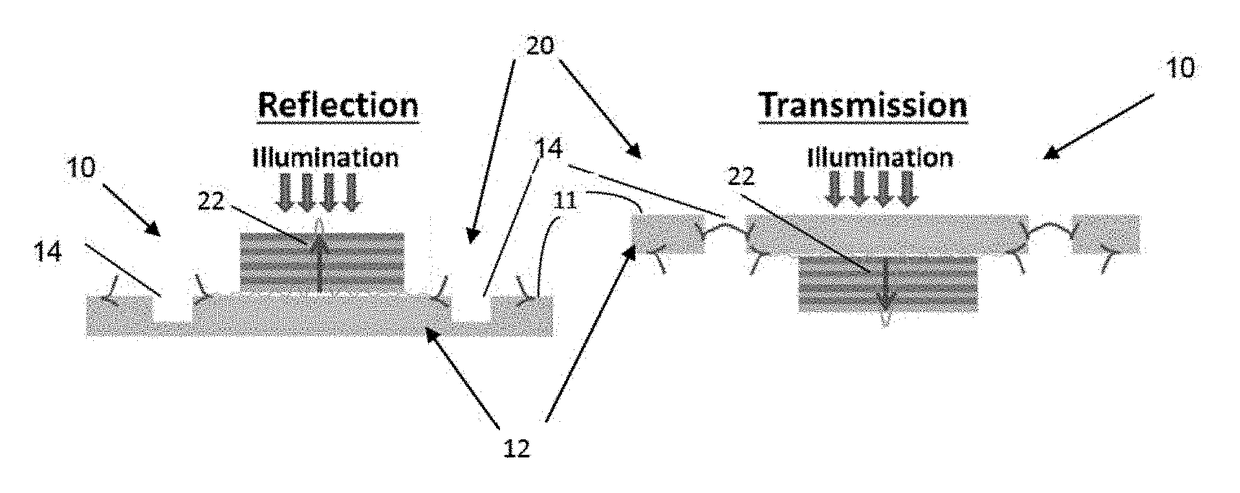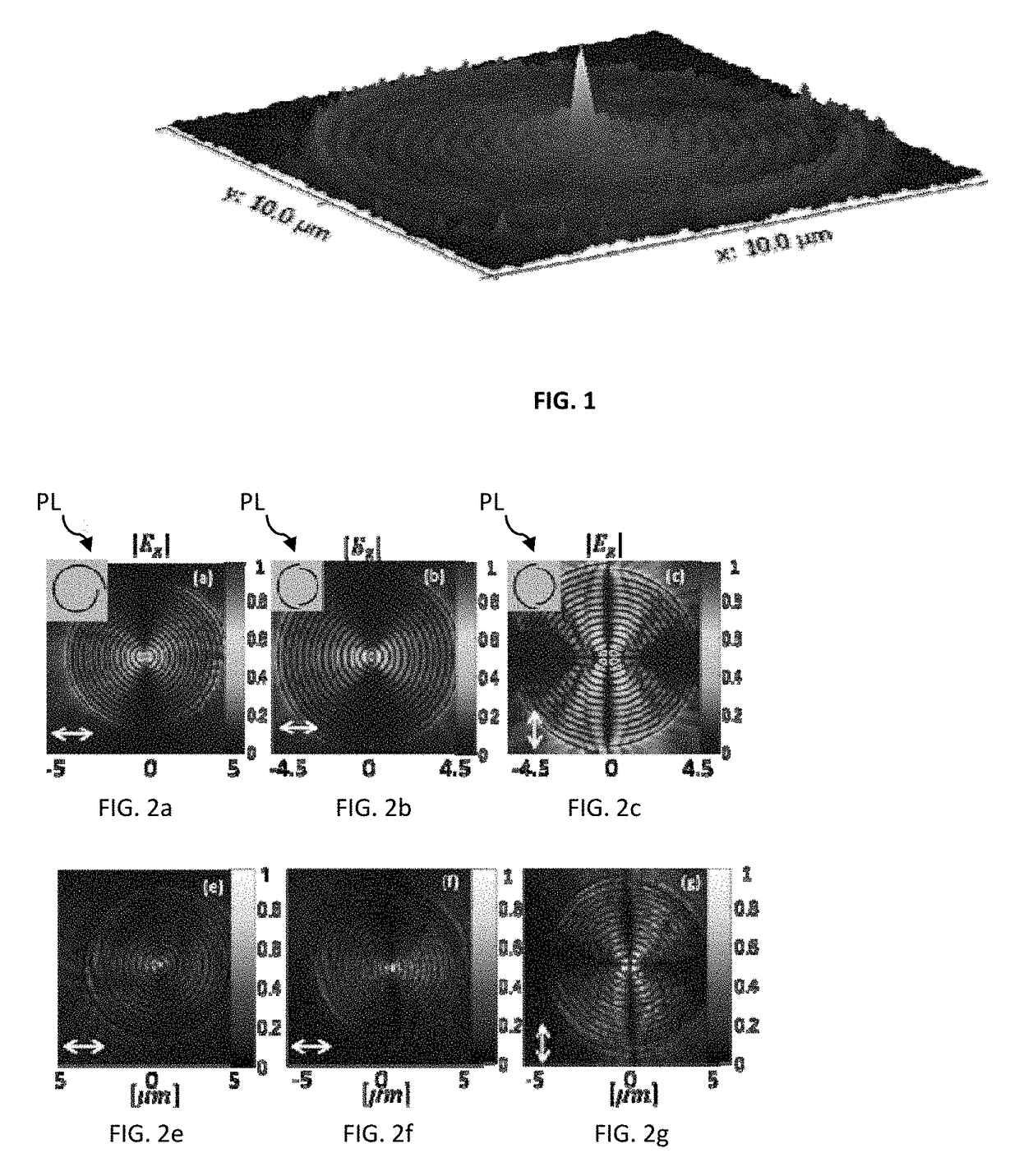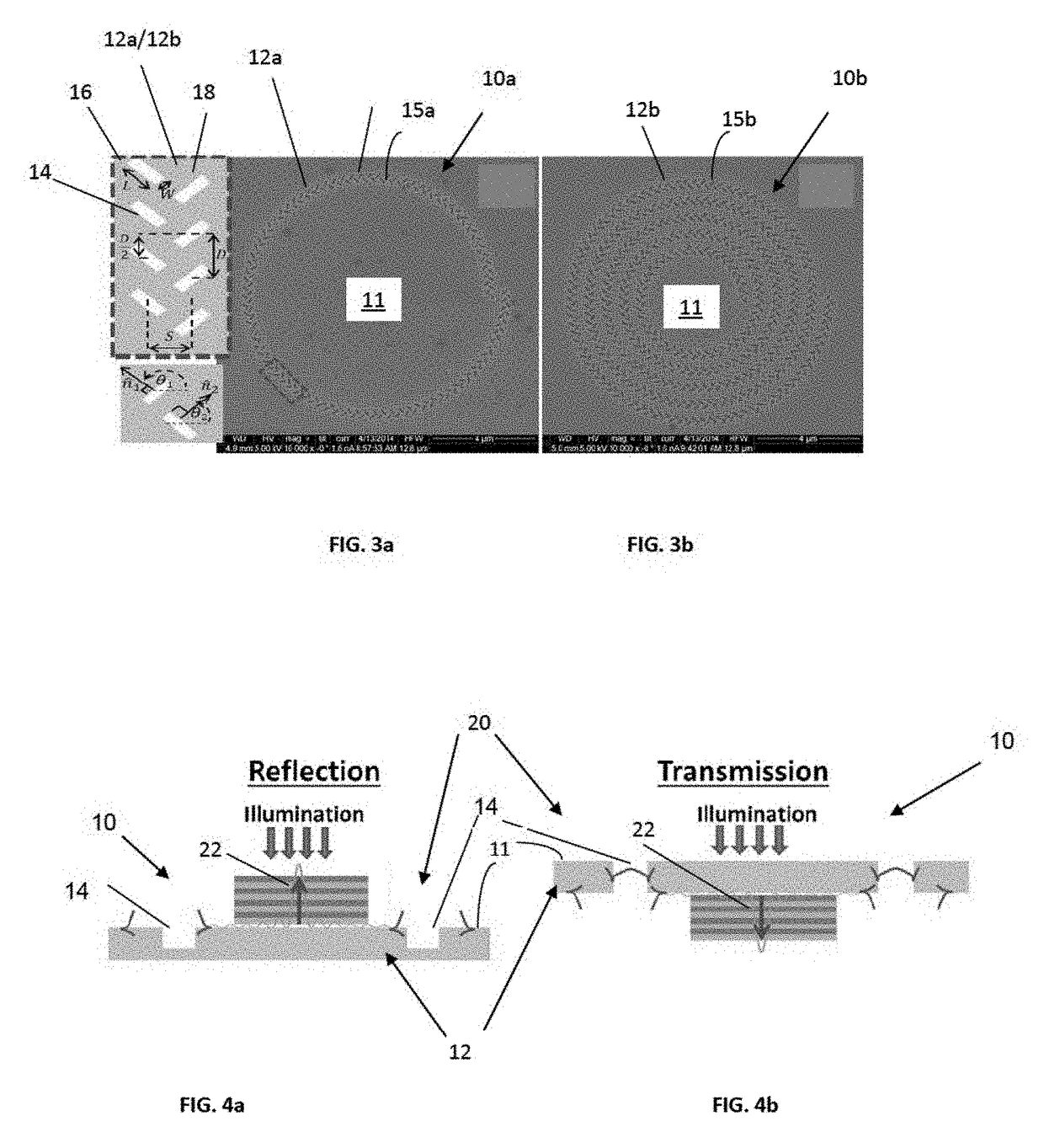Plasmonic lens having a surface pattern providing linear-polarization-independent plasmonic focusing and circular polarization dependent plasmonic focusing
a plasmonic lens and surface pattern technology, applied in the field of plasmonic lenses, can solve problems such as common efficiency problems of known designs, and achieve the effects of improving focusing effect, reducing detector size, and reducing focal spot siz
- Summary
- Abstract
- Description
- Claims
- Application Information
AI Technical Summary
Benefits of technology
Problems solved by technology
Method used
Image
Examples
Embodiment Construction
[0036]In order to better understand the subject matter that is disclosed herein and to exemplify how it may be carried out in practice, embodiments will now be described, by way of non-limiting examples only, with reference to the accompanying drawings, in which:
[0037]FIGS. 2a,b,c,e,f,g illustrate the operation of plasmonic lenses of spiral configuration (FIGS. 2a,e) and half circles configuration (FIGS. 2b,c,f,g). As described above, the spiral-shaped plasmonic lenses are incapable of providing sufficient focusing effect (they suffer from blur of the focal spot), while the lens of the half-circles configuration, although solving such spot-size problem, is capable of providing desired focusing only for one of the two linear polarizations of input illumination.
[0038]Reference is made to FIGS. 3a,b showing two examples of a plasmonic lens of the invention. Here, FIG. 3a is a SEM image of a single armed lens 10a, and FIG. 3b is a SEM image of 5 armed lens 10b. More specifically, as sho...
PUM
 Login to View More
Login to View More Abstract
Description
Claims
Application Information
 Login to View More
Login to View More - R&D
- Intellectual Property
- Life Sciences
- Materials
- Tech Scout
- Unparalleled Data Quality
- Higher Quality Content
- 60% Fewer Hallucinations
Browse by: Latest US Patents, China's latest patents, Technical Efficacy Thesaurus, Application Domain, Technology Topic, Popular Technical Reports.
© 2025 PatSnap. All rights reserved.Legal|Privacy policy|Modern Slavery Act Transparency Statement|Sitemap|About US| Contact US: help@patsnap.com



